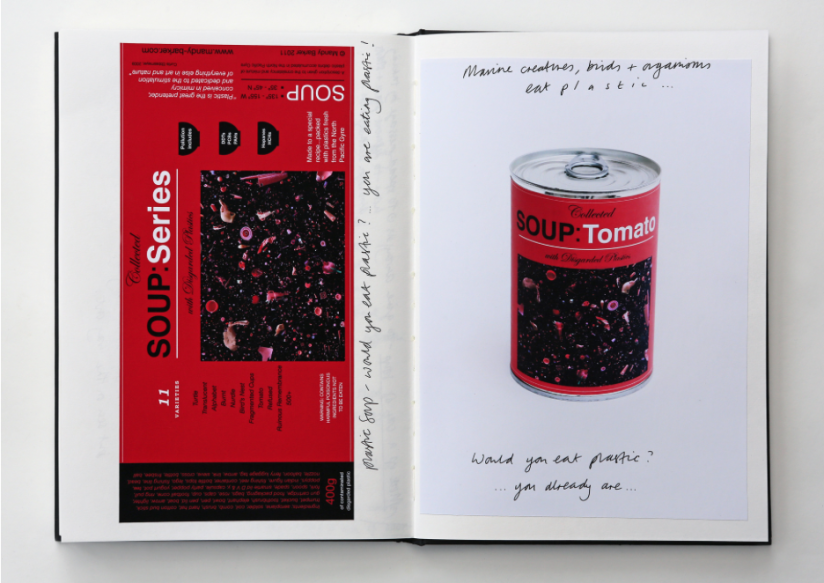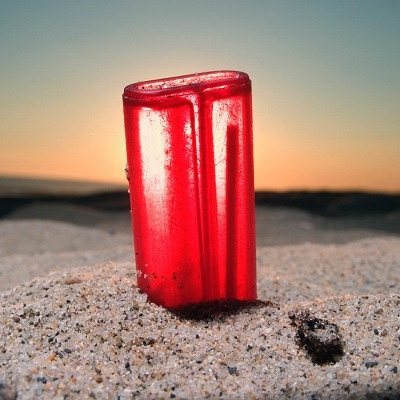
I like the use of the resin as it holds the content inside it. Also, because the resin is transparent, you can clearly the feathers inside. I would like to use the plastic I have found, as well as resin, in a fish mould to show that plastic is being consumed by fish. If the resin is clear then this might make it harder to see the detail of the the fish. In order to see the detail, I might paint in the detail.

I like the style of this, as it is presented as a magazine cover. The meaning of the poster is to show that plastic is being eaten by animals, and to put it in perspective, they used a rhetorical question to show if humans would consider drinking plastic. For my posters I will consider using text to emphasise my point, I might decide on using a rhetorical question or facts and statistics.

I like this because it is clear that the meaning of this poster is that we are eating plastic, which is in fish. I also like the simplicity of this design. However, I don’t like the colour of the plastic as it blends in with the background, in order to stop this they could’ve used a dark colour to outline the shapes. I might experiment will this illustrative style, if I do, I will include more than just plastic bottles as plastic has many uses.

I like this because the artist created the outline of the turtle as well as the objects inside the turtle. If the poster didn’t have the dark blue outline, then it may be harder to identify the shape they’ve created. I will attempt to re-create the poster without the outline, by using the scanner. If this doesn’t go well, then I will experiment in photoshop as well.















